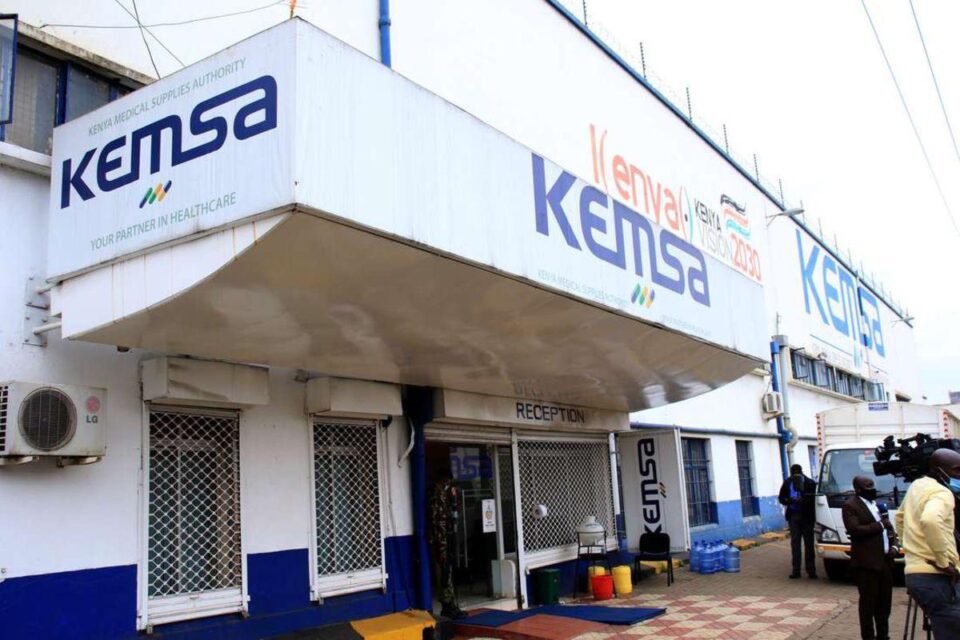The latest report shows that Kemsa had 922 employees on its payroll, more than 170 percent more than the approved workforce of 341.
The details are included in a report released by the Action Plan and in the medium term became the Working Committee on Reforms recently appointed to initiate reforms in the agency. The task force also found that Kemsa was below market demand and with a productivity of 18 percent versus target performance of over . operated 90 percent.
“The agency suffers from below-average productivity, the order execution rate is 18 percent with a target performance of over 90 percent. Kemsa’s order lead time is an average of 46 days, ”the report shows.
Of the 11,000 orders that Kemsa received this year, only 345 were processed, which is below that of the agency’s financial crisis. It owes 6.4 billion shutters and 4.5 billion shutters to its creditors. Kemsa’s chairman of the board, Ms. Mary Mwadime, said the agency was underperforming and unable to do so to meet customer needs, particularly the delivery of essential districts.
“The agency is largely underperforming and unable to meet urgent needs of customers, particularly the supply of essential medicines to the districts . This has endangered the lives of Kenyans, “said the chairman.
She said the release of all employees to work from home was a procedural formalism to facilitate the review of the organizational structure.
The governors decided yesterday to hire alternative medical suppliers for drugs to ensure that there were no shortages.
The decision follows the layoff of over 900 employees v on Kemsa. The NYS and Kenya Defense Forces have been enlisted to oversee the agency’s operations. However, the move was stopped by the court.
Most public hospitals have suffered from a chronic shortage of critical and essential medicines for six months, with many patients dying of easily curable diseases thanks to the procurement of easily curable diseases. Scandals in Kemsa.
The counties received their last drug disbursement in April. Since then, hospitals have been working with the available stocks and buying some essentials from other suppliers.
In Kisumu, Taita Taveta, Baringo, Bungoma and Kakamega, patients buy medicines from private pharmacies.
The governors have also called for the restructuring of the procurement and distribution system for health products to the counties. They say that this will be accountable to both governments.
“The demands of the 47 counties for medical supplies and equipment are higher than those of the national government, which we should be allowed to procure,” said the Board of Governors (CoG) said.
The district chiefs’ decision comes after continued pressure to end Kemsa’s monopoly. A new bill was presented to the Senate on Monday aimed at repealing the provision that requires counties to buy drugs from Kemsa.
Sponsored by ODM-nominated Senator Naomi Shiyonga, he is trying to do that Change the Kemsa Act to require all counties to source medicines and medical supplies from the agency as the first port of call.
The House of Representatives introduced a two-year prison sentence or Sh2 million penalty for anyone who opposed the decree.
Before the law was changed, counties had a choice between independent suppliers or the Mission for Essential Drugs and Supplies, jointly owned by the Catholic Bishops’ Conference of Kenya and the Christian Health Association of Kenya is located.
Since Kemsa was only supplying 70 percent of the medical needs at the time, the district leaders had suggested that Meds be 20 percent de s 30 percent should be sourced from Kemsa deficits and the other 10 percent from other suppliers >
“While the provision of most basic health services is assigned to the counties, we are responsible for the counties’ health facilities from Level 1 to Level 5. The role of national governments in providing health services is limited to the national referring health facilities,” explained Martin Wambora, chairman of the CoG.
The CoG also called on institutions charged with protecting public resources against looting and abuse in order to investigate and hold accountable all those responsible for the mismanagement found guilty by Kemsa.
There's no story that cannot be told. We cover the stories that others don't want to be told, we bring you all the news you need. If you have tips, exposes or any story you need to be told bluntly and all queries write to us [email protected] also find us on Telegram

